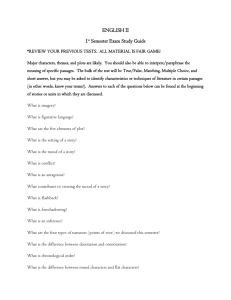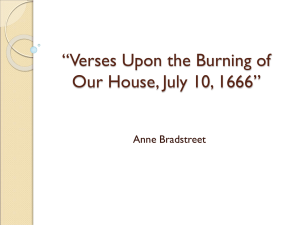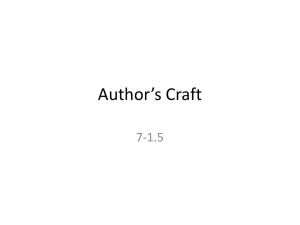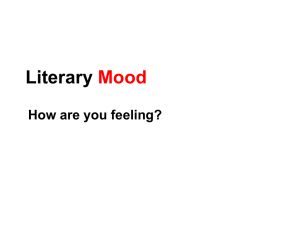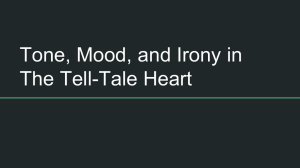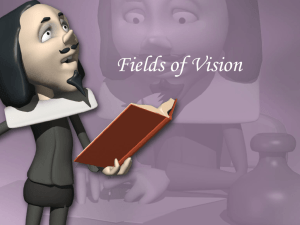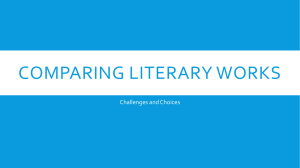Figurative Language and Literary Devices
advertisement
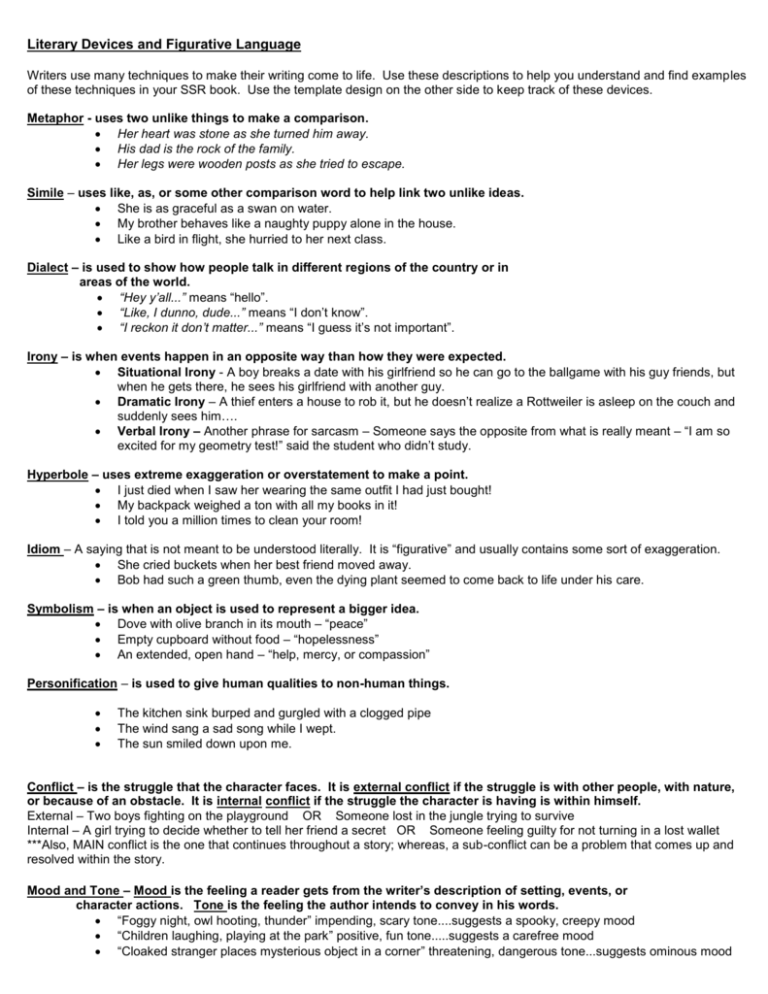
Literary Devices and Figurative Language Writers use many techniques to make their writing come to life. Use these descriptions to help you understand and find examples of these techniques in your SSR book. Use the template design on the other side to keep track of these devices. Metaphor - uses two unlike things to make a comparison. Her heart was stone as she turned him away. His dad is the rock of the family. Her legs were wooden posts as she tried to escape. Simile – uses like, as, or some other comparison word to help link two unlike ideas. She is as graceful as a swan on water. My brother behaves like a naughty puppy alone in the house. Like a bird in flight, she hurried to her next class. Dialect – is used to show how people talk in different regions of the country or in areas of the world. “Hey y’all...” means “hello”. “Like, I dunno, dude...” means “I don’t know”. “I reckon it don’t matter...” means “I guess it’s not important”. Irony – is when events happen in an opposite way than how they were expected. Situational Irony - A boy breaks a date with his girlfriend so he can go to the ballgame with his guy friends, but when he gets there, he sees his girlfriend with another guy. Dramatic Irony – A thief enters a house to rob it, but he doesn’t realize a Rottweiler is asleep on the couch and suddenly sees him…. Verbal Irony – Another phrase for sarcasm – Someone says the opposite from what is really meant – “I am so excited for my geometry test!” said the student who didn’t study. Hyperbole – uses extreme exaggeration or overstatement to make a point. I just died when I saw her wearing the same outfit I had just bought! My backpack weighed a ton with all my books in it! I told you a million times to clean your room! Idiom – A saying that is not meant to be understood literally. It is “figurative” and usually contains some sort of exaggeration. She cried buckets when her best friend moved away. Bob had such a green thumb, even the dying plant seemed to come back to life under his care. Symbolism – is when an object is used to represent a bigger idea. Dove with olive branch in its mouth – “peace” Empty cupboard without food – “hopelessness” An extended, open hand – “help, mercy, or compassion” Personification – is used to give human qualities to non-human things. The kitchen sink burped and gurgled with a clogged pipe The wind sang a sad song while I wept. The sun smiled down upon me. Conflict – is the struggle that the character faces. It is external conflict if the struggle is with other people, with nature, or because of an obstacle. It is internal conflict if the struggle the character is having is within himself. External – Two boys fighting on the playground OR Someone lost in the jungle trying to survive Internal – A girl trying to decide whether to tell her friend a secret OR Someone feeling guilty for not turning in a lost wallet ***Also, MAIN conflict is the one that continues throughout a story; whereas, a sub-conflict can be a problem that comes up and resolved within the story. Mood and Tone – Mood is the feeling a reader gets from the writer’s description of setting, events, or character actions. Tone is the feeling the author intends to convey in his words. “Foggy night, owl hooting, thunder” impending, scary tone....suggests a spooky, creepy mood “Children laughing, playing at the park” positive, fun tone.....suggests a carefree mood “Cloaked stranger places mysterious object in a corner” threatening, dangerous tone...suggests ominous mood


